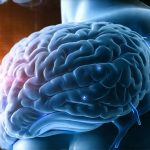Motion sickness is a surprisingly common affliction, impacting people across all ages and demographics. It’s far more than just a minor inconvenience; for some, it can be debilitating, turning travel – whether by car, boat, plane, or even virtual reality – into an ordeal. While often dismissed as simply ‘getting carsick,’ the underlying mechanisms are complex and frequently intertwined with the delicate workings of the inner ear. The experience itself is unpleasant, characterized by nausea, vomiting, dizziness, and general discomfort, but understanding why it happens requires delving into how our brains process spatial orientation and movement – and where things can go wrong in that processing.
The core issue isn’t necessarily a problem with travel itself, but rather a mismatch between what your inner ear senses and what your eyes perceive. This sensory conflict triggers the motion sickness response. Your brain receives conflicting signals about whether you are moving or stationary, causing confusion and ultimately leading to those familiar unpleasant symptoms. This disconnect can be exacerbated by individual susceptibility, anxiety, fatigue, and even what you’ve eaten recently. However, for a significant number of people, persistent or severe motion sickness isn’t just situational; it indicates an underlying issue within the vestibular system – the sensory system responsible for balance and spatial orientation housed largely within the inner ear. This article will explore the intricate link between motion sickness and various inner ear disorders, shedding light on how these conditions can contribute to travel-related discomfort and what steps might be taken to manage them.
The Vestibular System and Motion Sickness
The vestibular system is a remarkably sophisticated network of sensory organs within the inner ear that constantly provides information about your body’s position and movement in space. It comprises two main components: the semicircular canals, which detect rotational movements (like spinning or turning your head), and the otolith organs (utricle and saccule), which sense linear acceleration and gravity. These structures work in tandem with vision and proprioception (your body’s awareness of its position) to create a cohesive understanding of where you are and how you’re moving. When these systems align, we experience a stable sense of balance and orientation.
Motion sickness arises when there is a discrepancy between the information received from these sources. For example, in a car, your inner ear senses motion – acceleration, deceleration, turns – but your eyes, focused on a stationary object inside the vehicle (like a book or phone), tell your brain you’re relatively still. This sensory mismatch triggers a signal to the brain’s vomiting center, resulting in the symptoms of motion sickness. Individuals with underlying vestibular disorders may experience this mismatch more readily, even with less pronounced movements, because their inner ear is already compromised and sending inaccurate or inconsistent signals. This can lead to increased susceptibility to motion sickness and more severe symptoms.
The severity of motion sickness also depends on individual sensitivity. Some people have naturally more robust vestibular systems that can better tolerate sensory conflict. Others are simply more prone to experiencing it due to genetic predisposition, anxiety, or psychological factors. However, when motion sickness is persistent, disproportionate to the level of movement experienced, or accompanied by other symptoms like hearing loss or tinnitus, it’s a strong indication that an underlying inner ear disorder might be present and warranting further investigation with a healthcare professional. It’s important to understand gut inflammation can also play a role in overall health, potentially exacerbating these symptoms.
Meniere’s Disease and Motion Sickness
Meniere’s disease is a chronic inner ear condition characterized by episodes of vertigo (a spinning sensation), fluctuating hearing loss, tinnitus (ringing in the ears), and a feeling of fullness or pressure in the ear. The exact cause remains unknown, but it’s thought to involve an abnormal buildup of fluid in the inner ear, disrupting the normal function of the vestibular system. The episodic nature of Meniere’s disease means that motion sickness can be particularly pronounced during active episodes and may even precede other symptoms, serving as an early warning sign.
- During a Meniere’s attack, the distorted signals from the malfunctioning inner ear significantly increase the likelihood of experiencing severe motion sickness, even from minimal movement.
- The fluctuating hearing loss associated with the disease can further exacerbate the problem, as it diminishes one source of sensory input that helps maintain balance and orientation.
- The unpredictability of Meniere’s attacks makes travel planning difficult for sufferers, often leading to anxiety which itself can worsen motion sickness symptoms.
Managing motion sickness in individuals with Meniere’s disease requires a multifaceted approach. This includes managing the underlying condition through dietary changes (reducing salt intake), medication (diuretics to reduce fluid buildup), and lifestyle modifications. For travel, preventative measures like taking anti-motion sickness medications before traveling and focusing on a fixed point in the distance can help minimize symptoms. However, it is crucial for those with Meniere’s disease to consult their physician before using any medication due to potential interactions or contraindications. Understanding digestive flow can also improve overall well-being, and potentially reduce discomfort during travel.
Labyrinthitis and Vestibular Neuritis
Labyrinthitis and vestibular neuritis are inflammatory disorders affecting the inner ear and the vestibular nerve, respectively. Labyrinthitis involves inflammation of both the vestibular and cochlear components of the inner ear, leading to vertigo, hearing loss, and tinnitus. Vestibular neuritis specifically targets the vestibular nerve, causing sudden onset of severe vertigo without significant hearing loss. Often these conditions are thought to be triggered by a viral infection, but bacterial infections or autoimmune responses can also play a role.
The inflammation disrupts the normal function of the inner ear’s balance mechanisms, creating an acute imbalance in sensory input and making individuals incredibly susceptible to motion sickness – even long after the initial vertigo subsides.
- The lingering effects of vestibular neuritis/labyrinthitis can cause a persistent sense of imbalance or unsteadiness, making even mild movements feel more pronounced and triggering motion sickness symptoms.
- Post-inflammatory damage to the inner ear can leave individuals with a reduced capacity to compensate for sensory conflict, resulting in increased sensitivity to motion.
- The rehabilitation process after these conditions often involves vestibular therapy exercises designed to retrain the brain to interpret signals from the damaged inner ear and improve balance.
Vestibular rehabilitation is key to restoring function and reducing susceptibility to motion sickness following labyrinthitis or vestibular neuritis. These exercises gradually expose individuals to movements that trigger symptoms, helping them to adapt and recalibrate their sensory systems. Additionally, maintaining a healthy lifestyle, managing stress levels, and avoiding triggers like sudden head movements can further minimize the risk of experiencing motion sickness. A connection between intestinal gas and overall inflammation could contribute to these sensitivities.
Persistent Postural-Perceptual Dizziness (PPPD)
Persistent postural-perceptual dizziness (PPPD) is a chronic condition characterized by ongoing dizziness or imbalance triggered by specific visual stimuli or movements. It often develops after an acute vestibular event, such as vestibular neuritis/labyrinthitis, but can also occur without a clear initiating event. The hallmark of PPPD is that symptoms are exacerbated by motion – even simple things like walking in a grocery store, riding in a car, or watching fast-moving objects on a screen. Unlike traditional motion sickness which occurs during movement, PPPD typically involves post-movement dizziness and perceptual distortions.
- Individuals with PPPD often report feeling “off” or unsteady even when standing still, and this sensation intensifies with any form of movement.
- The brain seems to fixate on the conflicting sensory information from the inner ear and visual system, creating a vicious cycle of dizziness and anxiety.
- PPPD can be particularly debilitating because it interferes with everyday activities and significantly reduces quality of life.
Treatment for PPPD focuses on vestibular rehabilitation therapy specifically tailored to address the perceptual distortions and overreliance on visual cues. This involves exercises that challenge the brain’s interpretation of sensory input, helping to reduce anxiety and restore a more accurate sense of balance. Cognitive behavioral therapy (CBT) can also be helpful in managing the psychological component of the condition, as anxiety often exacerbates symptoms. For those with PPPD, preemptive motion sickness medications may offer limited relief, but the primary focus should be on long-term rehabilitation and management strategies. The impact of menstrual cycle phases on sensitivity to these symptoms is also worth considering for female patients. Furthermore, the relationship between brain fog and dizziness can often overlap with PPPD symptoms. Finally, ensuring adequate sleep quality is crucial for managing any chronic health condition, including PPPD.
It is important to remember that this information is for general knowledge purposes only and does not constitute medical advice. If you are experiencing persistent or severe motion sickness, especially if it is accompanied by other symptoms like hearing loss, tinnitus, or vertigo, please consult a healthcare professional for proper diagnosis and treatment.


















